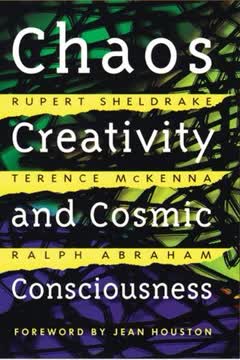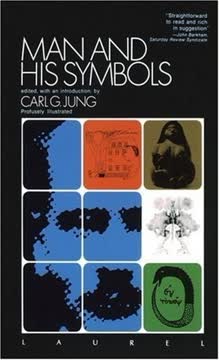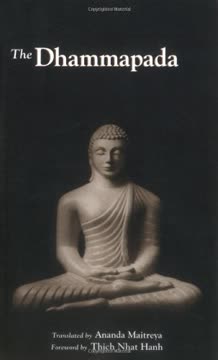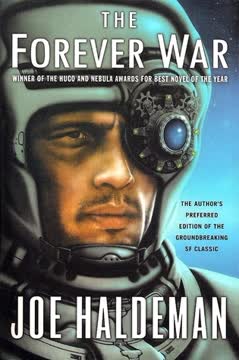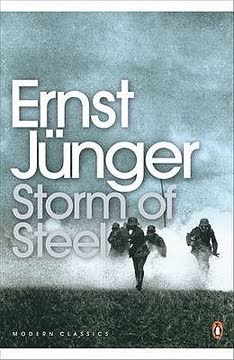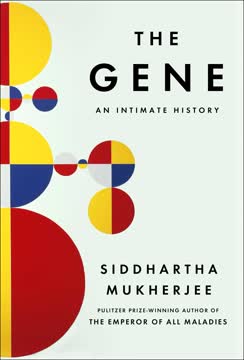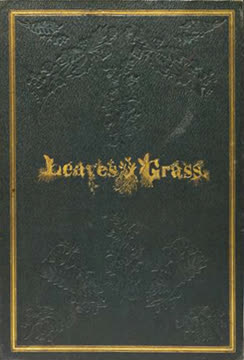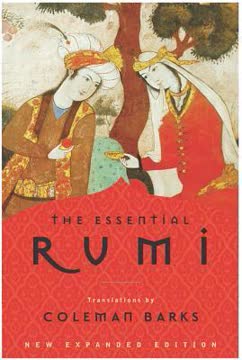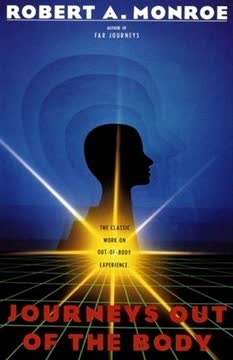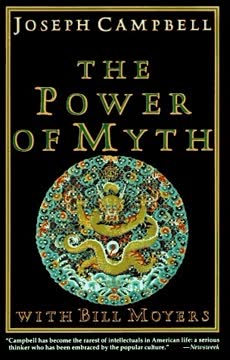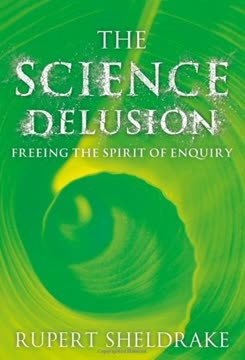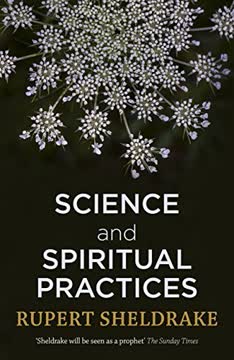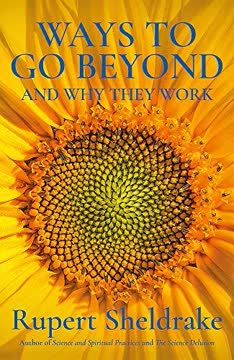Key Takeaways
1. The Universe is Evolving, Not Static
The universe is an evolving system of habits.
Challenging Newtonian Physics. The traditional scientific worldview, rooted in Newtonian physics, posits unchanging laws of nature and a fixed amount of matter and energy. This contrasts sharply with the evolutionary perspective, which sees the universe as a dynamic process of progressive development. The Big Bang theory, for instance, fundamentally shifted cosmology from a static to an evolutionary model.
Evolving Habits of Nature. Instead of eternal laws, consider the regularities of nature as evolving habits. This concept, proposed by Rupert Sheldrake, suggests that the universe has an inherent memory, with each type of organism forming a cumulative collective memory through morphogenetic fields. This means that the way things are is influenced by the way they were.
Implications for Science. This shift in perspective has profound implications for how we understand science. It suggests that the laws of nature are not fixed but are subject to change and evolution. It also opens the door to new ways of understanding creativity and the emergence of new forms in the universe.
2. Chaos is the Birthplace of Order and Creativity
Chaos is not something that degrades information and is somehow the enemy of order, but rather it is something that is the birthplace of order.
Beyond Disorder. Chaos is often perceived as disorder and randomness, but chaos theory reveals that it is, in fact, a source of hidden order and creativity. Chaotic systems, while unpredictable in detail, exhibit underlying patterns and structures known as chaotic attractors. These attractors exert influence on less organized states, guiding them toward end states.
The Dripping Faucet Example. The dripping faucet is a paradigmatic example of a chaotic time series. When the time between drops is measured and visualized through chaoscopy, a smooth curve emerges, revealing a hidden order within the seemingly random data. This demonstrates that chaos is not simply the absence of order but a complex system with its own inherent dynamics.
Reinstating Tiamat. The repression of chaos, as exemplified by the Babylonian myth of Marduk slaying Tiamat, has led to an inhibition of creativity and a resistance to imagination. The chaos revolution calls for the reinstatement of Tiamat, accepting chaos as a friend and recognizing its role in the emergence of new forms.
3. Imagination is a Cosmic Force, Not Just Human
For me, the key to unlocking what is going on with history, creativity, and progressive processes of all sorts is to see the state of completion at the end as a kind of higher-dimensional object that casts an enormous and flickering shadow over the lower dimensions of organization, of which this universe is one.
The Divine Imagination. The imagination is not merely a human faculty but a cosmic force, a "three-stroke engine" that impels creativity and drives the evolutionary process. This Divine Imagination can be seen as a higher-dimensional attractor, drawing all organization and structure toward itself over billions of years.
Gaian Dreaming. Human history can be viewed as a Gaian dream, with each of us serving as a cell in communication with the Divine Imagination. Dreams and psychedelic experiences are chemical cousins, offering glimpses into the Gaian mind and providing corrective tuning for our life state.
Imagination as Eschatology. Imagination is a kind of eschatological object, shedding influence throughout the temporal dimension and the morphogenetic field. It is a beacon, a scout sent ahead that precedes us into history, guiding us toward the realization of our collective dreams.
4. The World Soul Connects All Levels of Existence
There’s a cosmic imagination, the imagination of the anima mundi, the soul of the universe. Within this are the imaginations of galaxies, solar systems, planets, ecosystems, societies, individual organisms, organs, tissues, and so on.
Nested Hierarchy of Souls. The world soul, or anima mundi, is the largest and smartest creature imaginable, an organism that has arisen out of biology. Within this cosmic soul, there exists a nested hierarchy of souls, from galaxies and solar systems to planets, ecosystems, and individual organisms.
The Primal Unified Field. All forms and patterns of things that develop in the world have their own organizing fields, and all are ultimately derived from the primal unified field. This field has a memory of everything that's happened within it already, and the cosmic imagination involves ongoing memory in a world whose physical body is shaped by the habits of nature.
Beyond Space and Time. The world soul is not confined to the space/time continuum but incarnates in one universe after another. It is an aspiration of eternity for consciousness and unconsciousness, an ultimate essence of the life experience that transcends the limitations of incarnation.
5. Vision and Light Bridge the Physical and Mental
Physical light and the light of consciousness. Light and vision. The location of visual images. Mind extending from the eyes.
Beyond the Brain. The conventional theory of vision locates visual images inside the brain, but this does not correspond with actual experience. Instead, the image of what we see may be projected outward, with the mind extending from the eyes to engulf the object being viewed.
The Sense of Being Stared At. The sense of being stared at, often dismissed as folklore, may be evidence of an influence passing out through the eyes. This influence could be a mental field or a reverse movement through the light that is coming into the eyes.
The Electromagnetic Field as Interface. The electromagnetic field may serve as an interface between the matter fields and the mental, psychic, and morphic aspects of ourselves and the world soul. This field, with its holographic reality, could be the medium of divine omniscience, connecting all things and making them known to the cosmic mind.
6. Entities Offer a Glimpse Beyond the Material
In all times and all places, with the possible exception of Western Europe for the past two hundred years, a social commerce between human beings and various types of discarnate entities, or nonhuman intelligences, was taken for granted.
Beyond the Physical. Discarnate intelligences and nonhuman entities, often dismissed as mythology or pathology, have been a persistent presence in human experience and folklore. These entities may be nonphysical and autonomous, existing independently of human perception.
The Shamanic Model. The shamanic model offers a framework for understanding these entities, viewing them as "helping" spirits with whom a symbiotic relationship can be established. This contrasts with the scientific model, which often reduces these experiences to mental projections or schizophrenia.
Entities and Language. The ability of these entities to communicate in languages we understand suggests that the field of language itself must be prepared for such communication. By opening ourselves to the voices of the elementals, we may reclaim our connection to the family of nature.
7. Reclaiming the Unconscious is Key to Transformation
By giving people a less restricted choice of addictions, we can cause some growth in consciousness and some shrinkage of the unconscious.
The Bifurcation of Mind. The creation of the unconscious, the origin of evil, and the repression of chaos are three great bifurcations in the history of consciousness. These events have led to a shrinking of the conscious mind and a growing dominance of the unconscious.
The Role of Ritual and Psychedelics. The suppression of psychedelics and the increasing interval between partnership rituals have contributed to the rise of the dominator society. By reinstituting these practices and reclaiming the power of chaos, we may begin to heal the split between the conscious and unconscious.
Addiction and Choice. Addiction is an inherent part of the human condition, but by giving people a less restricted choice of addictions, we can promote growth in consciousness and a shrinkage of the unconscious. This involves replacing harmful addictions with more beneficial ones and reclaiming free will without rejecting addiction altogether.
8. Resacralization Requires a Synthesis of Old and New
The resacralization of space and time involves not only recognizing the sacredness of churches and cathedrals and traditional festivals, but recognizing the importance of sacred places everywhere and of every kind…. This involves a much more animistic version of Christianity and Judaism, a process I’ve come to think of as the greening of God.
Beyond Traditional Religion. The resacralization of the world involves more than simply returning to traditional religious practices. It requires a synthesis of old and new, incorporating elements of animism, green consciousness, and a scientific worldview.
The Greening of God. This process involves a more animistic version of Christianity and Judaism, recognizing the sacredness of all nature and the interconnectedness of all things. It also calls for a reinterpretation of religious texts and traditions to align them with contemporary values.
The Role of Art and Music. Art and music play an integral role in the resacralization program, providing a means of connecting with the sacred and expressing the ineffable. By revitalizing these sacred arts, we may create a new mythology that can guide us toward a more sustainable and harmonious future.
9. Education Should Be an Initiatory Journey
I think it is of primary importance to recognize consciously that education is a form of initiation…. In fact, modern education involves an initiation into the rationalist or humanist worldview.
Beyond Rote Learning. Education should be more than simply the transmission of information. It should be an initiatory journey, a process of personal transformation that prepares individuals for their roles in society.
The Workshop Model. The workshop model offers a promising alternative to the traditional educational system, emphasizing experiential learning, group dynamics, and the development of practical skills. This model can be infused with spiritual and ethical values, creating a more holistic and meaningful educational experience.
A New Curriculum. The curriculum of the new educational system should include not only traditional subjects but also history, archaeology, mythology, and the sacred arts. It should also emphasize the importance of community participation and the development of moral and ethical values.
10. The Apocalypse is a Catalyst for Metamorphosis
When encountered outside the religious framework, the apocalyptic expectation of imminent transformation of the environment—with the individual somehow playing a central role—is labeled pathology. This pathological symptom in individuals is the driving force behind much of our civilization.
Beyond Doom and Gloom. The apocalyptic expectation, while often associated with doom and gloom, can also serve as a catalyst for positive change. By recognizing the inherent instability of the cosmos and the urgency of the present moment, we may be inspired to take action and create a more sustainable future.
A Self-Fulfilling Prophecy. The apocalyptic myth, with its emphasis on destruction and transformation, can become a self-fulfilling prophecy. By reinterpreting this myth and focusing on the potential for renewal and rebirth, we may shift the course of history toward a more positive outcome.
The Power of Faith. The journey toward a better future requires faith, a belief in the possibility of transformation and a commitment to working toward that goal. By embracing the power of faith and channeling it toward positive action, we may overcome the challenges of the present and create a new world order.
Last updated:
FAQ
What is "Chaos, Creativity, and Cosmic Consciousness" by Ralph Abraham, Terence McKenna, and Rupert Sheldrake about?
- Interdisciplinary Trialogues: The book is a series of conversations (trialogues) between a mathematician (Abraham), a biologist (Sheldrake), and an ethnobotanist/philosopher (McKenna) exploring the intersections of chaos theory, creativity, and the evolution of consciousness.
- Evolution of Ideas: It examines how scientific, philosophical, and mystical perspectives can be integrated to understand the nature of reality, creativity, and the cosmos.
- Key Themes: Major topics include the evolution of the universe, the role of chaos and order, the imagination, morphic resonance, the world soul (anima mundi), psychedelics, and the resacralization of science and society.
- Dialogue Format: The book’s unique format allows for dynamic, multi-perspective discussions, making complex ideas accessible and engaging.
Why should I read "Chaos, Creativity, and Cosmic Consciousness" by Abraham, McKenna, and Sheldrake?
- Unique Collaboration: It brings together three influential thinkers from different disciplines, offering a rare synthesis of science, philosophy, and spirituality.
- Expands Worldview: The book challenges conventional scientific and cultural paradigms, encouraging readers to rethink the nature of reality, consciousness, and creativity.
- Relevance to Modern Issues: It addresses contemporary crises—ecological, spiritual, and intellectual—by proposing new ways of understanding and engaging with the world.
- Inspires Dialogue: The trialogue format models how open, creative conversation can lead to new insights and collective wisdom.
What are the key takeaways from "Chaos, Creativity, and Cosmic Consciousness"?
- Evolving Universe: The universe is not static but an evolving system of habits and creativity, challenging the notion of fixed natural laws.
- Role of Chaos: Chaos is not merely disorder but the fertile ground from which creativity and new forms emerge, both in nature and human culture.
- Morphic Resonance: Sheldrake’s hypothesis suggests that memory and habits are inherent in nature, influencing the development of organisms and ideas.
- Resacralization: The authors advocate for a revival of the sacred in science, education, and society, integrating rationality with spirituality and ecological awareness.
How do Abraham, McKenna, and Sheldrake define and discuss "chaos" in "Chaos, Creativity, and Cosmic Consciousness"?
- Chaos as Creative Source: Chaos is seen as the womb of creation, a generative void from which order and novelty arise.
- Mathematical and Mythological Views: Abraham explains chaos theory’s scientific aspects, while all three discuss its mythological roots (e.g., Tiamat, the Milky Way).
- Repression and Return: The book traces how Western culture repressed chaos (especially through patriarchy and rationalism) and how its return is essential for creativity and healing.
- Chaos and Imagination: Chaos is intimately linked to the imagination, serving as the reservoir for dreams, visions, and cultural transformation.
What is "morphic resonance" and how is it explained in "Chaos, Creativity, and Cosmic Consciousness" by Rupert Sheldrake?
- Definition: Morphic resonance is Sheldrake’s hypothesis that there is a collective memory in nature, where similar forms and behaviors are influenced by previous occurrences.
- Habitual Universe: The regularities of nature are seen as evolving habits, not fixed laws, with each organism or system drawing on a cumulative memory.
- Evidence and Examples: Sheldrake cites phenomena like crystal formation and animal learning as suggestive of morphic resonance.
- Implications: This idea challenges reductionist science and opens the door to understanding phenomena like telepathy, collective learning, and the evolution of consciousness.
How do the authors of "Chaos, Creativity, and Cosmic Consciousness" relate creativity and imagination to cosmic evolution?
- Creativity as Ongoing Process: Creativity is not a one-time event but a continuous process shaping the universe, life, and culture.
- Imagination as Cosmic Force: The imagination is proposed as a higher-dimensional attractor, drawing evolution forward and manifesting new forms.
- Human and Cosmic Imagination: Human imagination is seen as a conscious aspect of a larger, possibly Gaian or cosmic imagination.
- Interplay of Habit and Novelty: Evolution is described as an interplay between established habits (morphic fields) and creative breakthroughs arising from chaos and imagination.
What is the "world soul" (anima mundi) and how is it discussed in "Chaos, Creativity, and Cosmic Consciousness"?
- Ancient and Modern Views: The world soul is an ancient concept revived in the book as the organizing, animating principle of the cosmos.
- Hierarchy of Minds: The authors discuss nested levels of consciousness, from individual organisms to Gaia (Earth), the solar system, and possibly the galaxy and universe.
- Biological and Mystical Dimensions: The world soul is seen as both a biological phenomenon (emerging from life) and a mystical reality (connecting all things).
- Psychedelics and Communication: The book explores how psychedelics may facilitate communication with the world soul and other nonhuman intelligences.
How does "Chaos, Creativity, and Cosmic Consciousness" address the relationship between science, spirituality, and the sacred?
- Critique of Reductionism: The authors critique the mechanistic, desacralized worldview of modern science, advocating for a more holistic, sacred approach.
- Resacralization Movement: They call for the resacralization of science, religion, and daily life, integrating ritual, myth, and ecological consciousness.
- Green Spirituality: The book links the revival of the sacred to the environmental movement, proposing a "greening of God" and the emergence of psychedelic churches.
- Dialogue and Synthesis: The trialogues themselves model a synthesis of rational inquiry and spiritual exploration.
What role do psychedelics and shamanic traditions play in "Chaos, Creativity, and Cosmic Consciousness"?
- Psychedelics as Catalysts: McKenna and the others discuss psychedelics as tools for accessing the imagination, the world soul, and higher states of consciousness.
- Shamanic Wisdom: The book highlights the importance of shamanic traditions in maintaining a symbiotic relationship with nature and the sacred.
- Loss and Recovery: The authors trace the historical suppression of psychedelics and shamanism, linking it to the rise of patriarchy and the unconscious.
- Modern Revival: They advocate for a responsible revival of psychedelic and shamanic practices as part of cultural and spiritual renewal.
How do Abraham, McKenna, and Sheldrake envision education in the "new world order" in "Chaos, Creativity, and Cosmic Consciousness"?
- Education as Initiation: Education is seen as a form of initiation, not just intellectual training but a holistic transformation involving ritual and experience.
- Workshop Model: The authors propose a decentralized, workshop-based system emphasizing experiential learning, group dynamics, and spiritual development.
- Integration of History and Myth: They advocate for teaching history as a system of resonances and including myth, ritual, and the sacred in the curriculum.
- Pluralism and Community: The envisioned system is pluralistic, community-driven, and responsive to individual and collective needs.
What is the significance of the "apocalypse" and "Omega Point" in "Chaos, Creativity, and Cosmic Consciousness"?
- Apocalyptic Tradition: The book explores the Western obsession with apocalypse, linking it to both religious and scientific visions of an end or transformation.
- Omega Point: Drawing on Teilhard de Chardin, the Omega Point is described as an attractor at the end of time, pulling evolution toward greater complexity and unity.
- Self-Fulfilling Prophecy: The authors discuss how apocalyptic myths can become self-fulfilling, shaping history and collective psychology.
- Transformation or Catastrophe: They suggest that humanity faces a choice between destructive apocalypse and a transformative leap in consciousness.
What are the best quotes from "Chaos, Creativity, and Cosmic Consciousness" and what do they mean?
- "The universe is an evolving system of habits." (Sheldrake) — Suggests that natural laws are not fixed but develop over time through collective memory.
- "History is the track in the snow left by creativity wandering in the Divine Imagination." (McKenna) — Implies that human history is a creative, imaginative process, not a random or predetermined sequence.
- "There is another level … which I am calling Chaos, or the Gaian unconscious. This contains not form but the source of form, the energy of form, the form of form, the material that form is made of." (Abraham) — Points to chaos as the deep source of all creativity and form in the universe.
- "The resacralization of space and time involves not only recognizing the sacredness of churches and cathedrals and traditional festivals, but recognizing the importance of sacred places everywhere and of every kind." (Sheldrake) — Advocates for a holistic, animistic spirituality that honors the sacred in all aspects of life.
- "The imagination argues for a divine spark in human beings. It is absolutely confounding if you try to see imagination as a necessary quantity in biology. It is an emanation from above—literally a descent of the world soul into all of us." (McKenna) — Asserts that imagination is a mysterious, possibly transcendent force within humanity.
Review Summary
Chaos, Creativity and Cosmic Consciousness receives mixed reviews, with ratings ranging from 1 to 5 stars. Some readers find the book thought-provoking and mind-expanding, praising the authors' innovative ideas and intellectual discussions. Others criticize it for lacking scientific rigor, being overly speculative, and digressing into psychedelic topics. The book's format, a trialogue between three thinkers, is seen as both a strength and weakness. While some appreciate the diverse perspectives, others find it disjointed and difficult to follow.
Similar Books
Download PDF
Download EPUB
.epub digital book format is ideal for reading ebooks on phones, tablets, and e-readers.
